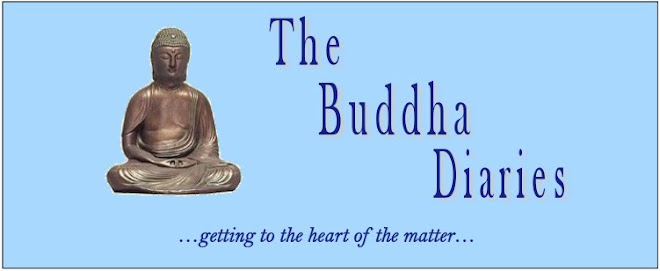(Please note: after some confusion resulting from yesterday's post about changes on The Buddha Diaries, I want to be clear that the usual means of access to the blog will remain unchanged for those who so choose. Rest assured that you won't have to go through a complicated route to get here--you'll be able to find TBD as you have always done in the past!)
I first saw Pina Bausch and her Tanztheater Wupperthal at the time of the Los Angeles Summer Olympics back in 1984. I was mesmerized both by the compulsively rhythmic ensemble work and the intense, ec-static, sometimes almost spastic individual performances. Ellie and I went to two different shows, and each was totally compelling, a beautiful and haunting exploration of the human psyche. So I was excited when I heard about the Wim Wenders film, Pina, and have been looking forward to seeing it. It proved hard to find, impossible to rent... We resorted eventually to buying a copy from an Amazon seller in Italy, and were not a little miffed when the package suggested that this version was in Italian. The discs inside, however, proved to be in a variety of languages--fortunately with English subtitles.
As one would expect from Wim Wenders, the film is an intense look at this intense artist's work. Pina Bausch herself died only two days before filming was due to start--and only five days after a cancer diagnosis--so the film inevitably became a memorial piece, celebrating her life and work. Her own appearances are brief and poignant, mostly in old black and white footage. Wenders relies on a series of portraits and brief excerpts from interviews with individual dancers, some of whom had worked with Pina for many years and who idolized the woman who was not only their choreographer but also their teacher, their soul-mate, their inspiration. He alternates these intimate, searching portraits with long dance sequences from the Pina Bausch oeuvre, knitting them together into an overview of her art.
It's an amazing life's work. The impression we get of Pina is of a woman totally dedicated to her vision, and to its enactment in the world. From her dancers, we understand that she allowed them total freedom, but demanded that they use it to explore the very depths of their artistic soul; if they were unclear, as they sometimes were, as newcomers, about what she expected from them, she rarely offered explicit guidance, but simply told them to "keep searching." She seemed to remain a mystery to them, and that mystery was clearly a part of their search: they were searching for themselves in her. As one of them suggested in her interview, they were all pieces of Pina. As an ensemble, they were the perfect projection of her vision.
And that vision was dark, often painful. I tend to see it in the context of the German "unbeweltigte Vergangenheit," the unconscious shadow cast by the grotesque history of fascist oppression and brutality. Pina's dances seem to penetrate the earth itself, celebrating the cycle of life with an emphasis on its tragedy, the clash of humans against humans, the ever-simmering threat of violence in even the most intimate of relationships. There is little tenderness in Basuch's work, despite its erotic power. It's significant, I think, the Wenders' film starts with a choreographed sequence from Stravinsky's Rite of Spring, with its still startling dissonances and primal, sacrificial themes. Rhythmically compelling, it speaks to our most primitive instincts, our deepest yearnings, our unending, the tragic predicament in which we find ourselves caught in the brief cycle between birth and death.
Pina shows us, insistently and without compromise, that dark side of our selves. Her dances are so beautiful, so mesmerizing, so much a reflection of our inner experience that we cannot look away. They entrap us, as they entrap the dancers in their repetitive patterns and contortions. They invite us to contemplate the depth of our suffering, and offer us only brief glimpses of joy. For this reason, the Buddhist in me eventually wearies of the compulsive darkness and seeks the surcease offered by the dharma. I recognize the truth of what she shows me, I am entranced by the beauty of the way she shows it. But after a while, I find that I want out, and the path she offers keeps leading me back in.

No comments:
Post a Comment